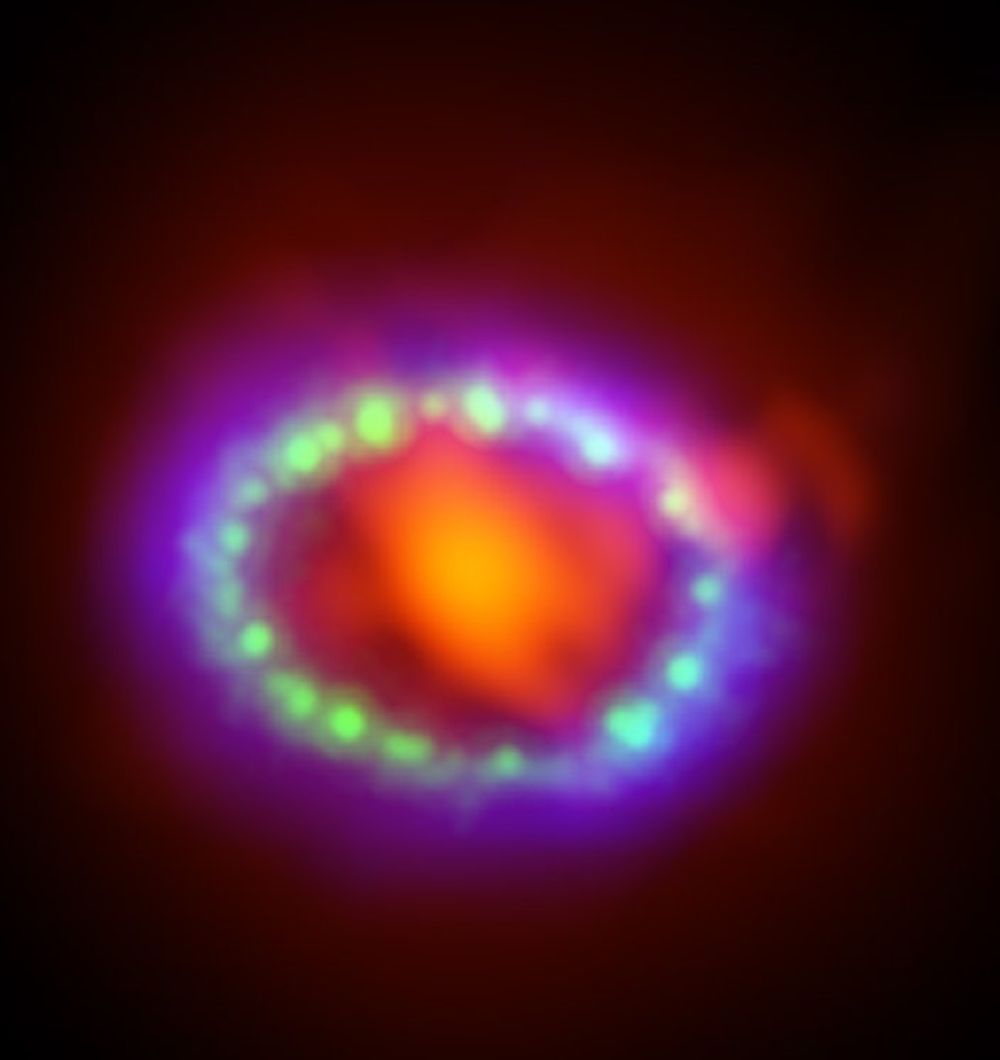Neutrinos are puzzling things. They’re tiny particles, almost massless, with no electrical charge. They’re notoriously difficult to detect, too, and scientists have gone to great lengths to detect them. The IceCube Neutrino Observatory, for instance, tries to detect neutrinos with strings of detectors buried down to a depth of 2450 meters (8000 ft.) in the dark Antarctic ice.
How’s that for commitment.
Neutrinos have a relationship with supernovae, massive stars that explode at the end of their lives. Neutrinos may have a role in triggering the eventual supernovae explosions of these stars. For that and many other reasons, astronomers are deeply curious about them.
A new study looked at what are called “pre-supernova neutrinos” which can be detected prior to the actual supernova. The new research should help astronomers understand the complex supernova phenomenon in greater detail.
The new study is titled “The sensitivity of presupernova neutrinos to stellar evolution models.” The study is co-authored by Ryosuke Hirai from the ARC Centre of Excellence for Gravitational Wave Discovery (OzGrav) at Monash University. The paper is available on the pre-press site arxiv.org.
A dying star can emit an enormous amount of neutrinos, which may trigger the supernovae explosion itself. They flow through and out of the star before the explosion inside the star reaches the surface. Because of that, it’s possible to detect the neutrinos from a supernova before the star actually explodes.
That happened with SN1987A, a supernova that exploded in the Large Magellanic Cloud in 1987. About two or three hours before the light from that supernova reached us, three separate neutrino observatories detected a burst of neutrinos. Though the supernova released an enormous, astronomical number of neutrinos, the three observatories only detected a total of 25 of them, emphasizing how difficult studying neutrinos is.

That detection of neutrinos gave birth to neutrino astronomy. And the observations also aligned with theory showing that 99% of the energy from a supernova is in the form of neutrinos.
But 1987 was a long time ago, in terms of technological progress. Today’s neutrino detectors are better, and scientists think that if a similar supernova were to explode today, we’d detect many more neutrinos. Rather than the 25 detected in 1987, we would detect a whopping 50,000.
In fact the technology has improved so much, that astronomers think they’ll detect pre-supernova neutrinos days in advance of the explosion, rather than only two or three hours. Because we can now detect so many of them, and from an earlier stage of the supernova explosion, astronomers think they’ll be able to learn more about the supernova process when the next one occurs.
Even though astronomers and astrophysicists know a lot about the supernova process, there’s an enormous amount of detail still to be discovered, especially in the final phases. Researchers hope that by detecting a large number of neutrinos, and from earlier in the supernova process, they can straighten out some of the details. Lots of scientists have built models of a supernova’s final phases, but the outcomes are random and it’s hard to verify any theories.
In this new study, the authors modelled different scenarios for a supernova with a 15 solar mass progenitor star. Their idea was to “investigate the diversity of presupernova neutrinos induced” by the different models. Neutrinos have different luminosities depending on what stage of a supernova they’re derived from. By modelling this, they’ll have a better understanding of what they’ll “see” the next time a supernova explodes.
In a press release, OzGrav researcher and co-author Ryosuke Hirai said: “This will help us make the most of the information from future pre-supernova neutrino detections. In this first study, we explored the uncertainty on a single star that is 15 times the mass of the Sun. The neutrino emission calculated from these stellar models differed greatly in the neutrino luminosity. This means that pre-supernova neutrino estimates are very sensitive to these small details of the stellar model.”

Supernovae are exquisitely complex, detailed astrophysical events. The diversity of emitted neutrinos depends on all kinds of factors. The authors say that theirs is a phenomenological model that “will play a pivotal role to bridge the gap between the theory of stellar evolution and neutrino observations.”
One of the gaps in our understanding of neutrinos and supernovae concerns core-collapse supernovae. When the core initially collapses, that produces electron neutrinos, and then the super-heated neutron core produces other types of neutrinos. Astrophysicists think that the vast majority of all those neutrons leave the star. But one percent of them actually deposit their energy into the outer layers of the star. That energy drives the eventual catastrophic destruction of the star. But that’s just a theory at this point, and more observations are needed to understand it. More observations, and more modelling like in this paper.
For the authors, this work is just a first step. “The results presented in this paper are still incomplete and this paper is a pilot study for more thorough investigations to connect the presupernova neutrinos to the theory of stellar evolution,” they write in the paper’s conclusion.
It seems like the entire astrophysics community might be waiting for the next supernova to explode. Scientists are poised to grow their understanding of supernovae and neutrinos in a big way. As the authors of a separate paper on supernovae and neutrinos wrote, “The high-statistics neutrino signal from the next nearby supernova (SN) would provide a bonanza of astrophysical and particle-physics information.”
“The next supernova in our galaxy can happen any day, and scientists are looking forward to detecting pre-supernova neutrinos, but we still don’t know what we can learn from it,” Ryosuke Hirai said in a press release. “This study lays out the first steps of how to interpret the data. Eventually, we’ll be able to use pre-supernova neutrinos to understand crucial parts of massive star evolution and the supernova explosion mechanism.”

